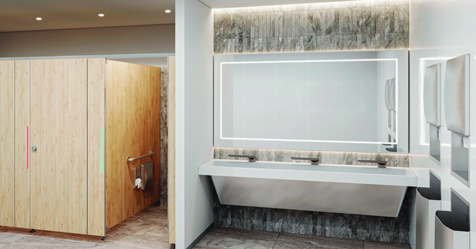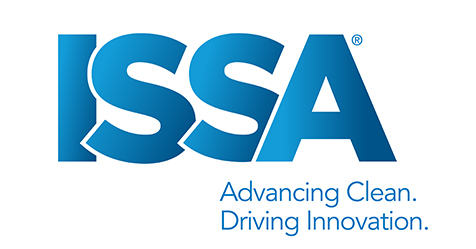Ladies restrooms often feature signs asking users not to dispose of feminine hygiene products in the toilet.
There are some very good reasons behind this request.
Both plumbers and many water utility companies recognize feminine hygiene products, such as tampons and sanitary napkins, as one of the major causes of water line clogging and backups.
One water utility’s website even advises, “Never put sanitary napkins down the toilet, even if the label indicates that you may do so. These [items] are not meant to be disposed of in this manner and besides backing up [sewage] lines, can damage your plumbing system.”
Backed up water utility lines can cause significant problems.
In fact, some communities even require commercial property owners to carry insurance covering the possible plumbing costs and damage that improper disposal of feminine hygiene products may cause.
Some water utility companies are unable to effectively treat the type of sewage created by improperly discarded feminine hygiene products, causing a situation that could eventually lead to the polluting of streams and rivers, possibly harming aquatic life and surrounding vegetation.
Improper disposal of feminine hygiene products can also pose a public health threat.
While these products may indeed be sanitary when they are fresh out of the box, they can become a breeding ground for a variety of germs and bacteria after use.
Identifying Germ Hotspots
Cross contamination is a risk for cleaning professionals in all types of cleaning but is paramount when it comes to disposing of feminine hygiene products.
In public places, tampons and sanitary pads are generally disposed of in small metal bins on the floor or attached to the stall wall next to the toilet.
In some cases, these bins have a liner, making it easier for cleaning workers to dispose of the contents.
In cases where there is no such liner, a cleaning professional must reach into the bin — hopefully wearing gloves — and collect the contents.
This is where the danger lies.
Several years ago, Redbook Magazine asked University of Arizona microbiologist Dr. Charles Gerba to identify the germ “hot spots” in ladies restrooms.*
According to Gerba, these were some of the top spots where contaminants were found:
- Floors
- Sinks (including faucet handles)
- The underside of the toilet seat
- The toilet flush handle.
But quite amazingly, the study found the sanitary napkin disposal bin to be at the very top of this list.
The report also said that workers or users who touch these spots and later put their fingers to their mouth, eyes or nose are at risk for illnesses such as Hepatitis A.
Protecting The User And The Cleaning Worker
While the study concluded that the best way to prevent the spread of cross contamination is proper and effective hand washing, manufacturers have also developed products that reduce the threat of disease for both bathroom users and custodial workers.
One development that has proven helpful is the introduction of waxed paper liners that can be inserted into feminine hygiene product disposal bins.
These are available in a variety of sizes.
Cleaning workers can generally empty bins with these liners by simply removing the bag.
However, these products do not offer any protection should the cleaning worker or user come in contact with the bin.
And, these specially designed liners can become costly over time.
A more recent development is small bins that use sensor technology to automatically raise and lower the bin’s lid as needed.
This means neither cleaning workers nor users ever have to actually touch the bin or its lid to use it or remove its contents.
This eliminates much of the risk of disease.
Further, the interior of these bins feature a plastic fitting with handle so that workers can easily remove it without coming in contact with the contents.
Custodial workers can then safely clean and disinfect this plastic liner in a variety of ways.
Making Restrooms Safer
The professional cleaning industry has made significant strides during the past 20 years when it comes to making public restrooms cleaner and healthier for both the user and the custodial worker.
Several steps, including more training and education, have also been implemented to ensure that the cleaning worker performs his or her cleaning task in a manner that protects their own health as well.
For many years, feminine hygiene products seemed to be overlooked when it came to this march of progress.
Fortunately, products are now available that address this health risk, eliminating one more concern regarding the safety of using public restrooms.
*Rose Martelli, “Your most embarrassing bathroom questions—answered!,” Redbook Magazine, July 1, 2002.
Ryan Kanine is the marketing manager for No Touch Solutions, a manufacturer of no-touch sanitary napkin bins. He may be reached thru the company website at www.NoTouchSolutions.com.
Safe Emptying And Cleaning Of Sanitary Napkin Bins
Because of the potential disease and health issues regarding the disposal of feminine hygiene products, custodial workers are advised to follow these steps if conventional sanitary napkin bins are installed:
- Wear gloves at all times.
- Do not reach into the bin from the lid; remove the top of the bin or the bin’s lid entirely to empty contents.
- If no liner is installed, empty the contents directly into a trash liner, secure the liner with a knot to prevent contents from being released and place into a larger liner; avoid touching the contents if possible.
- If a liner is installed, grab the top of the liner and tie the top into a knot to prevent contents from being released and place into a larger liner.
- Once emptied, clean the bin with an all-purpose cleaner and then spray a disinfectant in the bin, its swing opening and the side of the bin; allow for dwell time and wipe clean.
If using a sensor controlled system, many of these steps can be eliminated.
The most important thing to remember is to place the contents in a knotted trash liner.


